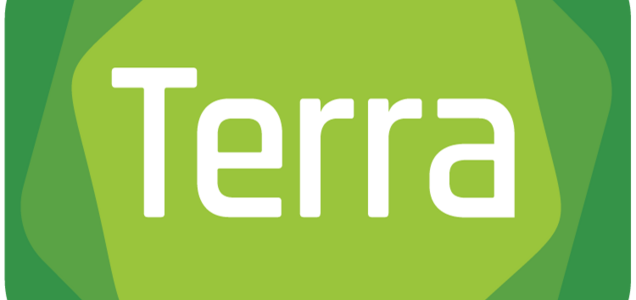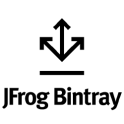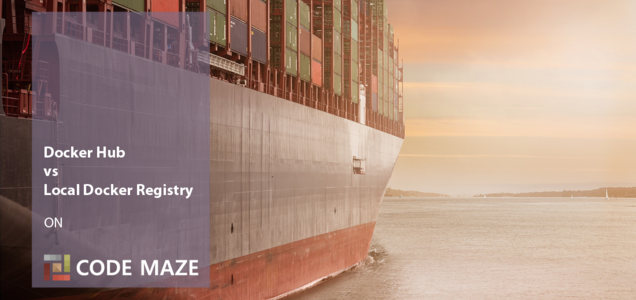Container Technology Wiki
Docker Containers
- Docker 101
- Basic Docker Operations
- Docker Administration
- Docker Security Resources
- Docker OS Interaction
- Docker With Other Tools
- Docker API
- Docker Compose
Kubernetes Guide
- Kubernetes 101
-
Kubernetes Architecture
- Kubernetes Ecosystem
- Kubernetes Nodes
- Kubernetes Pods
- Kubernetes Controllers and Control Plane
- Kubernetes DaemonSets
- Container Runtime Interface
- Working with Containers in Kubernetes
- Working with Images in Kubernetes
- Workloads in Kubernetes
- Kubernetes Services
- Kubernetes Jobs
- Kubernetes and Microservices
- Kubernetes Operators
- Kubernetes Persistent Volumes
- Kubernetes Advantages and Use Cases
-
Kubernetes Operations
- Installing Kubernetes
- Kubernetes Configuration
- Kubernetes Monitoring
- Kubernetes Debugging and Troubleshooting
- Kubernetes Load Balancing
- Kubernetes Security
- Kubernetes Networking
- Kubernetes Storage Management
- Kubernetes in Production
- Working with Kubernetes Ingress
- Kubernetes Security Best Practices
- Managing Kubernetes with Kops and Kubeadm
- Kubernetes Secrets
- Kubernetes Autoscaling
- Kubernetes ConfigMap
- Kubernetes Namespace
- Kubernetes Authentication
- Kubernetes Vault
- CIS Kubernetes Benchmark
- Kubernetes Cluster
- Kubernetes as a Service
- Managed Kubernetes
- Kubernetes Distributions
- Enterprise Kubernetes
Container Basics
- Container Architecture
- Advantages of Containers
- Container Challenges
- Containers and IT Infrastructure
- Enterprise DevOps
- eBPF
- eBPF Linux
Containers Ops
- Container Security Management
- Container Deployment
- Container Monitoring
- Container Automation
- Container Multitenancy
- Container Backup and Disaster Recovery
- Prometheus Monitoring
Container Security
- Container Security Best Practices
- Containers for DevSecOps
- Container Vulnerabilities and Threats
- Container Vulnerability Scanning
- Container Secrets Management
- Container Access Control
- Container Audits and Compliance
- Application Whitelisting
- Zero Trust Networks
- Network Segmentation for Containers
- Container Isolation
- Open Source Security Tools for Containers
- Open Source Vulnerability Scanner
- Open Source Security Tools
- Container Security Tools
Cloud Native Computing Foundation
- AWS EC2 Security
- Cloud-Native Applications
- Cloud-Native Architecture
- Cloud Native AWS
- Cloud Native Development
- Cloud Native Infrastructure
- Cloud Native Security
- Envoy Proxy
- Harbor Kubernetes
- Open Policy Agent
- Oracle Cloud Security
- SaaS Cloud Security
- Security Issues in Cloud Computing
- SPIFFE
- VMware Tanzu
Serverless Computing
- Serverless Architecture
- AWS Lambda
- Azure Functions
- Google Cloud Functions
- Serverless Security
- On-Premises Serverless Platforms
- Function as a Service - FaaS
- Knative
- Serverless vs Containers
Container Platforms
- Containers and Cloud Computing
- Container Operating Systems
- Red Hat Openshift
- Pivotal Container Service
- Multi-Cloud Strategy
- Kubernetes vs Cloud Foundry
- CWPP
Other Container Engines
Kubernetes Alternatives
Container Community and Events
- Container Technology Wiki
- Docker Containers
- Basic Docker Operations
- Docker Image Repositories
Docker Image Repositories
A Docker Image repository is a place where image registry are actually stored, compared to the image registry which is a collection of pointers to this images. This page gathers resources about public repositories like the Docker hub and private repositories and how to set up and manage Docker repositories.
Below we have compiled publicly available sources from around the world that present views on Docker Image Repositories.
The Container Security book by Liz Rice
Fundamental Technology Concepts that Protect Containerized Applications
Perspectives on Docker Image Repositories
Docker Hub vs Creating a Local Docker Registry
In this article, we are going to learn the difference between a Docker registry and a Docker repository and how to persist the changes we made to our images. We’re also going to learn more about Docker Hub and how to make our own local Docker registry.

docs.docker.com

mindmajix.com

Docker Registry vs. Docker Repository
michaelcrump.net

Official Docker Repositories on Docker Hub
docs.docker.com
How To

How To Build Docker Images and Host a Docker Image Repository with GitLab
In this tutorial, we will set up a new GitLab runner to build Docker images, create a private Docker registry to store them in, and update a Node.js app to be build and test inside of Docker containers.

Making a Docker Image the Easy Way: Using a Base Image
support.terra.bio

dev.to

Setting Up Your Own Docker Image Repository
linuxhint.com

How to Build and push Docker Image to the Docker Hub Repository
lthegeekdiary.com

Docker Tutorial: Docker Public Repositories
tutorialspoint.com
See our comprehensive list for more Docker Image Tutorials
Specific Technologies

cypress.io

Docker Repositories - JFrog Bintray
bintray.com
Further Reading
- Docker Image Repositories — A Docker Image repository is a place where Docker Images are actually stored, compared to the image registry which is a collection of pointers to this images. This page gathers resources about public repositories like the Docker hub and private repositories and how to set up and manage Docker repositories.
- Working With Dockerfiles — The Dockerfile is essentially the build instructions to build the Docker image. The advantage of a Dockerfile over just storing the binary image is that the automatic builds will ensure you have the latest version available. This page gathers resources about working with Dockerfiles including best practices, Dockerfile commands, how to create Docker images with a Dockerfile and more.
- Running Docker Containers — All docker containers run one main process. After that process is complete the container stops running. This page gathers resources about how to run docker containers on different operating systems, including useful docker commands.
- Working With Docker Hub — Docker Hub is a cloud-based repository in which Docker users and partners create, test, store and distribute container images. Through Docker Hub, a user can access public, open source image repositories, as well as use a space to create their own private repositories, automated build functions, and work groups. This page gathers resources about Docker Hub and how to push and pull container images to and from Docker Hub.
- Docker Container Management — The true power of Docker container technology lies in its ability to perform complex tasks with minimal resources. If not managed properly they will bloat, bogging down the environment and reducing the capabilities they were designed to deliver. This page gathers resources about how to effectively manage Docker, how to pick the right management tool including a list of recomended tools.
- Storing Data Within Containers — It is possible to store data within the writable layer of a container. Docker offers three different ways to mount data into a container from the Docker host: volumes, bind mounts, or tmpfs volumes. This page gathers resources about various to store data with containers, the downsides like the persistent storage and information on how to manage data in Docker.
- Docker Compliance — While Docker Containers have fundamentally accelerated application development, organizations using them still must adhere to the same set of external regulations, including NIST, PCI and HIPAA. They also must meet their internal policies for best practices and configurations. This page gathers resources about Docker compliance, policies, and its challenges.
Get updates on container technology


